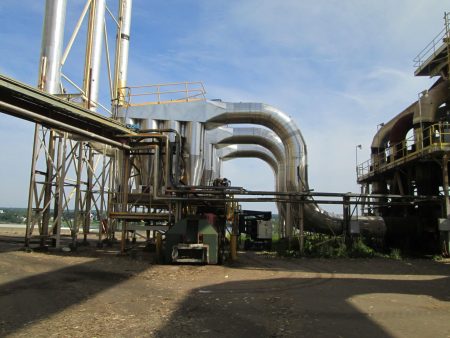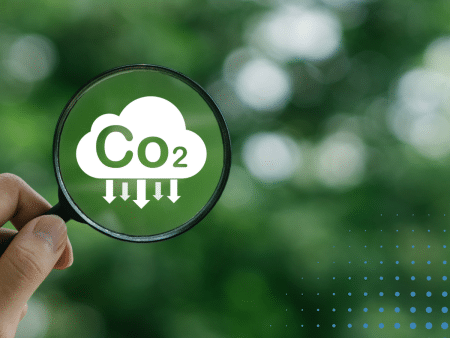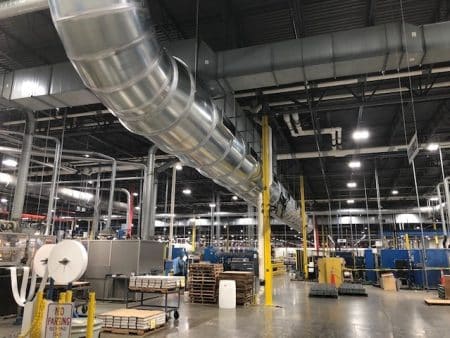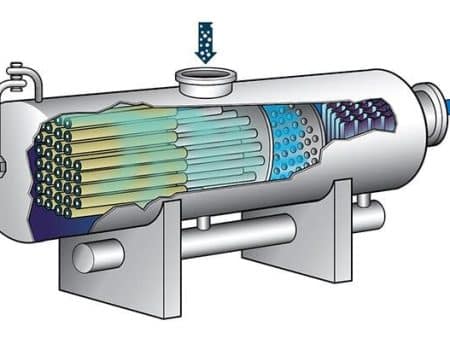An in-depth look at CECO Fisher-Klosterman Emtrol helps customers meet industrial product recovery and clean air emissions challenges.
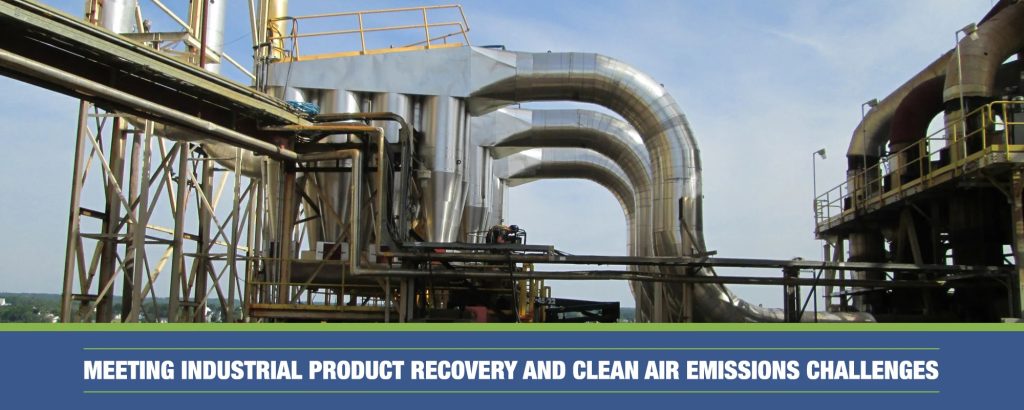
From waste incineration and pharmaceutical to building products and petrochemical applications, companies need to recover as much product as possible during production, while ensuring dangerous gases are captured and clean air is emitted into the environment. The solution is to utilize either industrial cyclones or scrubbers as stand-alone systems, or in combination with each other—offered in various arrangements based on customer requirements and applications.
Industrial cyclones are primarily used for particulate removal and product recovery, utilizing centrifugal force to capture, recover or remove large and high-volume dust from industrial applications. Scrubbers are primarily used for emissions control, by utilizing water, or other liquid, to remove particulate or fumes from an exhaust stream. However, in many cases both a cyclone and scrubber are paired to maximize product recovery, while meeting strict emissions standards depending on industry application.
Fisher-Klosterman, a CECO Environmental brand, has been developing cyclones and scrubbers since 1948. With its XQ Series Cyclone Dust Collectors and MS Venturi Scrubbers, customers can rest assured that their high temperature, high pressure, erosive particulate and corrosive gases severe process conditions are met.
Understanding the nuances of the various cyclone and scrubber designs and configurations will be a useful guide, whether researching products or simply seeking a primer in this area.
Capturing More Dry Materials
Companies seeking to optimize product recovery find that a cyclone is economical and ideal for use in separating particles from gas streams. This mechanical collector, made of carbon, stainless and other alloy steels, uses centrifugal force on a particulate-laden gas stream to capture product. This force essentially pushes the particles against the walls of the cyclone where they spiral to the bottom of the cyclone cone and are discharged. The cleaned gas then reverses direction and exists the top as clean air through the outlet pipe (or vortex finder). This entire process occurs without using moving parts—providing simple operation and maintenance.
Beyond economy is the efficiency of the cyclone. This stems from how quickly the particles move towards the wall, or collection area, of the cyclone. By optimizing how long the particle stays in the cyclone, or Residence Time, and the force acting on the particle, greater collection efficiencies are generated. Pressure drop and fractional efficiency (a collector’s removal efficiency at a specific particle size) describe the cyclone’s performance. However, these factors are variable based on the specific customer application.
Other features important to consider include:
- High temperature designs to over 2000°F continuous service
- Abrasion resistant linings for extended life
- Break-apart construction or manways for interior access
- Clean-in-place (CIP) systems
- Jacketing for heating or cooling of the cyclone shell
- Ultra-high efficiency designs for product recovery or emission control
- Internal and/or external insulation materials to minimize heat loss or allow use of lower temperature materials
With ASME Code design and construction for pressure vessels, as well as explosion containment, suppression, or venting per the National Fire Protection Association (NFPA), the seven basic models of CECO Fisher-Klosterman Cyclone Dust Collectors within the XQ Series meet the needs of a myriad applications.
Achieving High Emissions Control
In many industrial applications, a higher level of emissions control is needed than is practical with a cyclone —whether by regulations or other requirements. Applications such as high temperature quenching (up to 2000°F), a higher level of removal efficiency, humid/sticky airstreams and odor removal, among others, necessitate a wet scrubber in many cases.
The goal: to provide the equipment solutions needed to improve manufacturing air quality.
Scrubbers are used for gaseous and particulate control, by means of utilizing water, or other liquid, to remove pollutants from an exhaust stream. CECO Fisher-Klosterman offers its MS Venturi Scrubber as a solution.
The MS Venturi Scrubber is designed to have a low plant space utilization with a compact cyclonic separator design. It is able to effectively quench gas streams and collect particulate in a single package. With vertical and horizontal gas inlets, an adjustable venturi throat forces dust particles to become entrained with water droplets, which are then sent to the separator where they are separated from the gas stream by centrifugal force. The compact mist eliminator of the MS Scrubber creates a high centrifugal force to remove the water droplets (with particulate) through two oversized liquid drains, minimizing the risk for plugging the separator and assisting in cleaning the air flow exiting the exhaust stack.
Other Applications
With a wide spectrum of industrial applications in various markets, there are other cyclone and scrubber types or arrangements. For example, CECO Fisher-Klosterman cyclones come in seven models designed for maximum product recovery; have multiple arrangements; high pressure and temperature applications; and overall have an extremely high level of customization to deliver guaranteed performance in each customer’s specific application.
CECO Fisher-Klosterman Scrubbers come in two types mentioned above. They come with features like vertical or horizontal gas entry, various throat and water injection designs and high solids concentration separator design, among many others. There are also package systems complete with tanks, pumps, instrumentation, piping, fans, stack and controls; and are constructed of carbon steel, stainless, corrosion resistant metal alloys, and FRP construction.
In many cases, cyclones and scrubbers are combined in various arrangements to maximize the product recovery and control emissions due to the severity or complexity of the application within the respective industry. Both offer a low total cost of ownership, as well as easy maintenance, maximum efficiency and performance warranties—offering peace-of-mind and confidence your needs are fully met. To learn more, visit Fisher-Klosterman.
